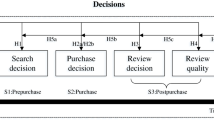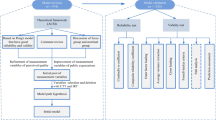Abstract
China’s healthcare system has been challenged by patient dissatisfaction with primary care and an increased tendency toward visiting high-level general hospitals, which undermine the vision of a hierarchical diagnosis and treatment system. Using the game theory, we built a model that incorporated patients’ preferences and use of healthcare facilities to predict the utilization of primary care at the population level. We modeled patient behavior as an incomplete information game, whose equilibrium represents patient choice. A discrete choice model was built to describe patient satisfaction to compare the expected and actual utility. We proposed the quick fictitious play algorithm for the game model that could improve computation efficiency, using survey data from Jilin Province in the year of 2008 and 2013 in estimation, and data from 2018 to test the model’s prediction accuracy, with a prediction error of approximately 5%. We subsequently used the prediction model to simulate various scenarios, to shed light on policy recommendations, to make a theoretical contribution that estimates patient utility under ordered multi-classification choice sets, and provided policy recommendations for proceeding toward a hierarchical diagnosis and treatment system.





Similar content being viewed by others
References
Andersen RM (1968) Families’ use of health services: a behavioral model of predisposing, enabling, and need components. Dissertation, Purdue University
Arrow KJ (1963) Uncertainty and the welfare economics of medical care. Am Econ Rev 53(5):941–973
Borah BJ (2006) A mixed logit model of health care provider choice: analysis of NSS data for rural India. Health Econ 15(9):915–932
Buczko W (1992) What affects rural beneficiaries use of urban and rural hospitals? Health Care Financ Rev 14(2):107–114
Chen, Z., Nicholas, H. and Lurie (2013). Temporal contiguity and negativity bias in the impact of online word-of-mouth. J Market Res (50:4), 463-476.
Cheraghi-Sohi S, Hole AR, Mead N, McDonald R, Whalley D, Bower P, Roland M (2008) What patients want from primary care consultations: a discrete choice experiment to identify patients’ priorities. Ann Fam Med 6(2):107–115
Dobson AJ, Barnett AG (2008) An Introduction to Generalized Linear Models, 3rd edn. Chapman & Hall/CRC, Boca Raton, FL
Ellis RP, Mclnnes DK, Stephenson EH (1994) Inpatient and outpatient health care demand in Cairo Egypt. Health Econ 3(3):183–200
Grossman M (1972) On the concept of health capital and the demand for health. J Polit Econ 80(2):223–255
Hanson K, Yip WC, Hsiao W (2004) The impact of quality on the demand for outpatient services in Cyprus. Health Econ 13(12):1167–1180
Huan W et al (2017) Analysis on rural residents’ first choice behavior of common diseases under hierarchical medical system in Henan. Chin Health Econ 36(5):69–71
Jaeker JB, Tucker AL (2017) Past the point of speeding up : the negative effects of workload saturation on efficiency and patient severity. Manag Sci 63(4):1042–1062
Larsen DE, Rootman R (1976) Physician’s role performance and patient satisfaction. Soc Sci Med 10:29–32
Liao R, Liu Y, Peng S, Feng XL (2021) Factors affecting health care users’ first contact with primary health care facilities in north eastern China, 2008–2018. BMJ Glob Health 6(2):e003907. https://doi.org/10.1136/bmjgh-2020-003907
Ma Y, Teng H, Sun N (2016) Medical-care-seeking behavior of illness-caused poverty patients in rural areas and the influencing factors. Chin Gen Pract 19(1):100–105. https://doi.org/10.3969/j.issn.1007-9572.2016.01.021
National Health Commission of the People’s Republic of China (2020) 中国卫生健康统计年鉴 [China Health Statistics Yearbook]. Peking Union Medical College Press, Beijing
Pascoe GC (1983) Patient satisfaction in primary health care: a literature review and analysis. Eval Program Plann 6(3–4):185–210
Pliskin JS, Shepard DS, Weinstein MC (1980) Utility functions for life years and health status. Oper Res 28(1):206–224
Pourreza A, Khabiri R, Arab M, Sari AA (2009) Health care-seeking behavior in tehran, iran and factors affecting it. J School Public Health Inst Public Health Res 7(2):1–13
Ross CK, Frommelt G, Hazelwood L, Chang RW (1987) The role of expectations in patient satisfaction with medical care. J Health Care Mark 7(4):16
Singh J (1989) The patient satisfaction concept: a review and reconceptualization. Adv Consum Res 16:176
Song J, Wen J (2015) A non-cooperative game with incomplete information to improve patient hospital choice. Int J Prod Res 53(23–24):7360–7375
Thompson AGH, Rosa S (1995) Expectations as determinants of patient satisfaction: concepts, theory and evidence. Int J Qual Health Care J Int Soc Qual Health Care 2:127–141
Thompson DA, Yarnold PR (1995) Relating patient satisfaction to waiting time perceptions and expectations: the disconfirmation paradigm. Acad Emerg Med 2(12):1057–1062
Vaithianathan R (2006) Health insurance and imperfect competition in the health care market. J Health Econ 25(6):1193–1202
WANG An-qi YIN Wen-qiang HAN Yan (2019) Analysis on the behavioral strategies of the core hospitals in medical alliance and patients based on the evolutionary game theory. Chin Health Economics 38(05):8–11
Williams B, Coyle J, Healy D (1998) The meaning of patient satisfaction: an explanation of high reported levels. Soc Sci Med 47:1351–1359
Wright DR, Wittenberg E, Swan JS, Miksad RA, Prosser LA (2009) Methods for measuring temporary health states for cost-utility analyses. Pharmacoeconomics 27(9):713–723
Xiao H, Barber JP (2008) The effect of perceived health status on patient satisfaction. Value Health 11(4):719–725. https://doi.org/10.1111/j.1524-4733.2007.00294.x
Zhang R, Zhao H, Xu Y, Zhang X, Wang C, Shang X (2019) Relationship between service efficiency and patient flow in large hospital outpatient system: a data driven perspective. J Manag Sci 32(06):72–85
Zhou L (2017) Study on NRCMI inpatients hospital choice behavior. Dissertation, University of Science and Technology of China
Acknowledgements
This work was partially supported by National Science Foundation of China (NSFC) under the grants 71671005, and 71671006.
Funding
This work was partially supported by National Science Foundation of China (NSFC) under the grants 72131001, 71671006 and 71761130083.
Author information
Authors and Affiliations
Contributions
Jie Song conceived the topic of this paper. Xing Lin Feng provided and processed the data. Zi Yang Wang did literature review. Zi Yang Wang made the first draft. Jie Song and Xing Lin Feng polished this paper.
Corresponding authors
Ethics declarations
Conflict of interest
The authors declare no conflict of interest.
Additional information
Publisher's Note
Springer Nature remains neutral with regard to jurisdictional claims in published maps and institutional affiliations.
Appendices
Appendix A. Chi-Square test on the age of GH patients and PHC patients
Appendix B. Steps of model selection
We used the forward method(LR). Step probability was 5%. The model coefficients in each step of the model selection process and their 95% confidence intervals are listed in Table 7 below.
Rights and permissions
About this article
Cite this article
Wang, Z.Y., Song, J. & Feng, X.L. A prediction model of patient satisfaction: policy evaluation and sensitivity analysis. Flex Serv Manuf J 35, 455–486 (2023). https://doi.org/10.1007/s10696-022-09448-9
Accepted:
Published:
Issue Date:
DOI: https://doi.org/10.1007/s10696-022-09448-9




